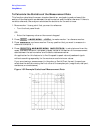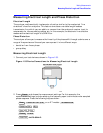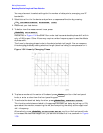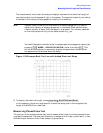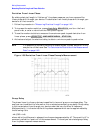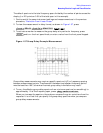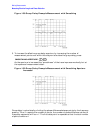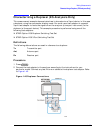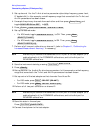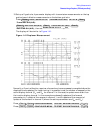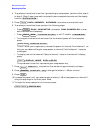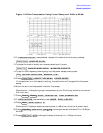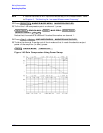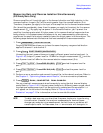
1-50
Making Measurements
Characterizing a Duplexer (ES Analyzers Only)
3. Set up channel 1 for the Tx-Ant stimulus parameters (start/stop frequency, power level,
IF bandwidth). In this example, a wide frequency range that covers both the Tx-Ant and
Ant-Rx parameters has been chosen.
4. Uncouple the primary channels from each other and then press and
toggle to .
5. Press .
6. Set up the desired mode.
• For K36 mode, toggle to ON. Then, press
.
• For K39 mode, toggle to ON. Then, press
.
7. Perform a full two-port calibration on channel 1 (refer to Chapter 6 , “Calibrating for
Increased Measurement Accuracy,” if necessary).
NOTE Make sure you connect the standards to the Tx port of the test adapter (or a
cable attached to it) for FORWARD calibrations, and to the Ant port for
REVERSE calibrations.
8. Save the instrument state by pressing .
9. Press .
10.Set up channel 2 for the Ant-Rx stimulus parameters. In this example, a wide frequency
range that covers both the Tx-Ant and Ant-Rx parameters has been chosen.
11.Set up control of the test adapter so that channels 2 and 4 are Rx:
• For K36 mode, press .
• For K39 mode, press .
12.Perform a full two-port calibration on channel 2.
NOTE Make sure you connect the standards to the Rx port of the test adapter (or a
cable attached to it) for FORWARD calibrations, and to the Ant port for
REVERSE calibrations.
13.Save this state in the analyzer:
Press .
14.Connect the duplexer to the test adapter.
Sweep Setup
COUPLED CH on OFF
OFF
System
CONFIGURE MENU
USER SETTINGS
K36 MODE on OFF
Meas
SELECT [TX-ANT]
K39 MODE on OFF
Meas
SELECT PORTS [1-3]
Save/Recall
SAVE STATE
Chan 2
Meas
SELECT [RX-ANT]
Meas
SELECT PORTS [2-3]
Save/Recall
SAVE STATE



